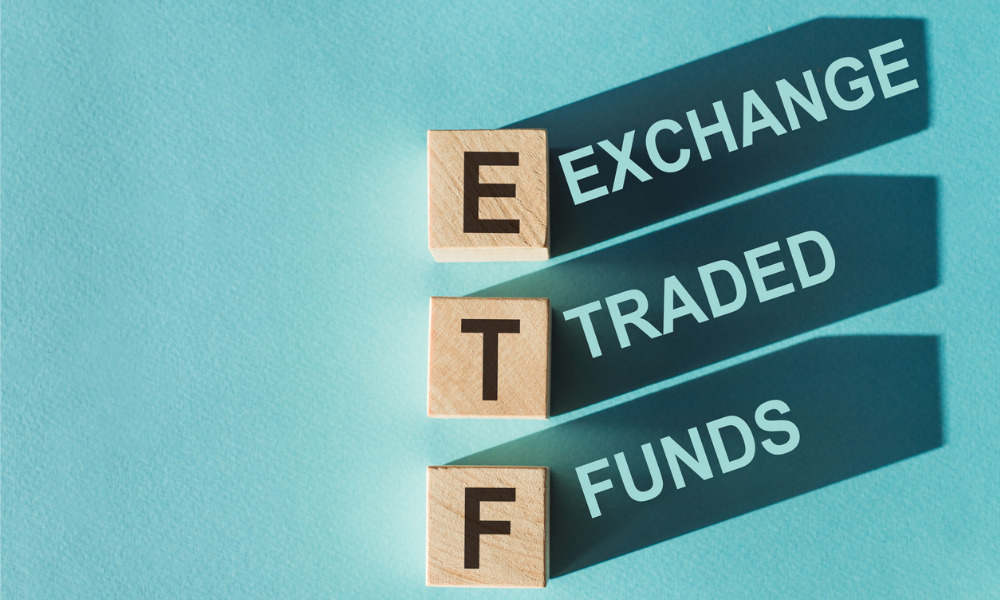CI Global Asset Management's Head of ETF Strategy explains shifts in investor preferences

There’s no denying that it’s been an ugly first half for financial markets, with record levels of inflation and rising rates causing a great deal of hand-wringing and nail-biting among investors. But for those focused solely on aggregate flows into the Canadian ETF space, that fear hasn’t been so clear.
“It really depends on one’s perspective,” said Nirujan Kanagasingam, Vice President and Head of ETF Strategy at CI Global Asset Management. “ETF net flows in the first half of 2022 are well below the first half of 2021 ($17B vs $30B), but the market volatility and landscape in 2022 are a lot different.”
Considering the prevailing uncertainty in both equity and fixed-income markets as the threat of recession hangs in the air, Kanagasingam says the ETF activity that’s occurred so far this year in terms of flows and launches has been impressive.
Notably, he says ETFs are once again outselling mutual funds, even though ETF assets are still just approximately one sixth of those held in Canadian mutual funds, based on the latest published statistics from the Investment Funds Institute of Canada (IFIC).
Product development in Canada’s ETF space has been healthy as well. More than 80 new ETF tickers were added to the Canadian fund ecosystem in the first half of 2022, with issuers focusing strongly on alternative investments, enhanced income ETFs, asset-allocation ETFs, thematic strategies – including the CI Digital Security ETF, CI Bio-Revolution ETF, CI Galaxy Blockchain ETF and CI Galaxy Metaverse ETF – and active ETFs.
“It’s no secret that passive ETFs account for the majority of flow and AUM in Canada and Globally, and this has been the case this year as well,” Kanagasingam says, highlighting investors’ continued attraction to their low fees and simplicity. “However, as we are currently witnessing an economic regime change to higher inflation and rising interest rates, we are also seeing investor preferences change towards more active ETFs.”
In particular, he says active income ETFs have benefited from increased interest as the back up in yields presents a compelling opportunity in fixed income. Income-oriented strategies and covered call ETFs – aside from providing exposure to a segment of the market, they can generate income in volatile markets through covered calls written by the manager on the underlying holdings – have likewise seen increased adoption.
“Over the past 12 months we have seen increased appetite for our covered-call strategies as investors are looking to harness the volatility in the market into enhanced yields,” Kanagasingam says. “Of popularity has been our CI Tech Giants Covered Call ETF (TXF.B) which invests in some of the largest technology companies with a covered call overlay. Investors have been looking at this ETF to re-allocate to the technology space while generating strong income potential.”
While passive strategies still take in the majority of ETF flows in Canada, Kanagasingam is seeing shifts in investor preference toward certain asset classes, which he expects to accelerate as investors come to grips with the new economy that’s taking shape.
Inflation has run consistently high in Canada, with the latest May 2022 CPI print at 8.6%, the largest year-on-year reading since December 1981. While CI GAM expects some of the supply-side drivers of inflation to ease by the second half of the year, ETF investors have taken an increasing interest in inflation-hedging strategies, including real-asset and infrastructure ETFs. As an example, Kanagasingam highlighted the actively managed CI Global Infrastructure Private Pool (CINF), which invests in global infrastructure assets with long-duration contracts, visible cash flows and strong businesses with high barriers to entry.
“Infrastructure provides a long-term inflation hedge as it offers lower correlation with other traditional asset classes and recurring income with inflation-linked revenue protection,” he says.
For investors concerned about rising interest-rate risk, Kanagasingam says floating-rate ETFs have become an increasingly attractive option, as evidenced by strong flows during the first half. The recently launched CI Floating Rate Income Fund, he notes, actively invests in in various higher-yielding floating rate debt assets such as bonds and loans, as well as short-term high-yield and investment grade bonds and floating rate preferred shares.
“Given that interest rates on loans and floating rate bonds are often adjusted monthly or quarterly, they can provide a hedge in a rising interest rate environment,” he says.
While Canada led the way globally last year with a spate of spot crypto ETFs, volatility in the cryptocurrency investment space has brought Bitcoin and Ethereum valuations down 60% and 70%, respectively, for this year up to June 30. But even as the digital asset space has been humbled, Canadian crypto ETF flows have held relatively steady.
“Despite the performance in 2022, crypto-related ETF flows are still largely flat on the year (S60M), which shows that investor demand for these strategies still exist and ultimately these ETFs provide investors a convenient and secure way of getting exposure to the crypto markets,” Kanagasingam says.



